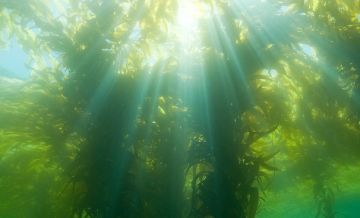Bestcare - Spirulina - Harvesting the Sun's Energy
Many of you will recall the scene from the motion picture Out of Africa where Robert Redford flies a plane over a lake covered with scattering flamingos.
The lake was Lake Nakuru in Kenya, and the food the flamingos were eating was Spirulina. The rich flora of Lake Nakuru supports over a million flamingos, who sieve the algae with a specialized feather in their beaks. The flamingos even owe their famous pink plumage to pigments derived from the algae.
Pure and Simple Food
 From the simplest elements – water, carbon dioxide, simple nitrogen and phosphorus, and sunlight – Spirulina creates an extremely concentrated and wonderfully complex food, rich in an astonishing array of nutrients. This is what is meant by being low on the food chain.
From the simplest elements – water, carbon dioxide, simple nitrogen and phosphorus, and sunlight – Spirulina creates an extremely concentrated and wonderfully complex food, rich in an astonishing array of nutrients. This is what is meant by being low on the food chain.
The driving force behind this synthesis is the intense power of the sun. Spirulina fathers light with an organization of remarkable pigments, including the blue and green compounds, which give it the classification of blue-green algae. The green in blue-green algae is chlorophyll. The blue is phycocyanin which is found only in blue green algae species. The presence of phycocyanin in Spirulina helps account for its extremely high concentration of vegetarian protein.
Harvesting sunlight creates a problem for Spirulina. Spirulina needs as much sunlight as possible but must be protected from burning, especially in a shallow cultivation pond. Imagine lying out in the hot tropical sun all day long, 365 days a year. You would certainly go through a lot of sunscreen! To protect itself, Spirulina produces carotenoids, “Nature's Sunscreen.” The hotter the sun, the more sunscreen is needed, and the more carotenoids are produced. Tropical areas are thus better suited to Spirulina production than temperate areas.
Spirulina farms in non-tropical regions must shut down for 3 or 4 months a year due to insufficient amount of sunshine. But on the other hand, Spirulina farms in areas that get very hot may also have to shut down during the hot season because the heat and sunlight may kill the algae. To our knowledge, Spirulina grown at Cyanotech’s farm in Hawaii is the only Spirulina in the world that successfully grows twelve months per year. This continuous cultivation for over 20 years has allowed Hawaiian Spirulina to become the most carotenoid-rich Spirulina in the world (by far).
Excerpt from SPIRULINA: Nature’s Superfood By Kelly Moorhead and Bob Capelli with Dr. Gerald R. Cysewski